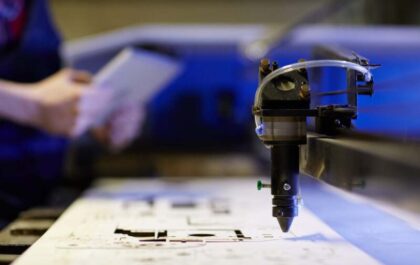Table of Contents
Introduction
In the age of spatial computing are attractive, people a shift from how we cooperated with inert computers in the past to how we can be involved with today’s immersive, appealing technology. Spatial computing explains how we’re progressively stepping inside the world of computers rather than just interacting with them from a distance.
For instance, around 53 million Americans own at least one smart speaker for voice-activated searching. Additionally, we’re growing progressively used to using AR filters on Instagram or Snapchat or applying virtual reality to our games.
Spatial computing calms the actual and digital worlds more significantly than ever before. As a result, our reality and the computer landscape become intertwined.
Spatial computing is possible because the skill in computer systems has evolved. A computer isn’t just a powerful static mechanism anymore. Instead, you can find computational devices in your phone, from smart glasses to intelligent assistants. Through spatial computation, we can create computers that roam the streets, self-sufficiently trying to tackle crime.
Extending Reality with Spatial Computing
Virtual Reality and Augmented Reality are the two technologies most likely associated with spatial computing. With spatial computing, designers and designers can explore the “extended reality” world or mixed reality. Where we operate digital data in a non-digital arrangement.
Augmented reality provides a cooperative way to bring two spaces collected in a course that encourages better understanding. For instance, the Boeing aircraft business used basic AR technology to help engineers determine where wiring needed to go within an aircraft.
This newly augmented workflow resulted in a 30% improvement in wiring installation times. What’s more, the company saw an 85% reduction in the number of errors made by staff.
Spatial Computing: Beyond AR and VR
Crucially, there is extra spatial computing than just AR and VR. However, for many individuals, those two technologies are the easiest way to recognize how human beings can step into the land of the digital. Beyond those tools. However, there is much more to the extended reality we have yet to explore. Spatial computing offers various technology options, from haptic feedback systems to edge computing, machine learning, robotics, and IoT.
Spatial computing technology with haptic feedback and 360-degree cameras could allow employees and individuals to feel like they’re stepping into an office environment when they need to collaborate with their team members.
A global workforce could quickly come together into a virtual environment where they can simultaneously explore new design chances and discover unique ways of working together. In a setting where remote work and the globalization of the workforce are becoming more popular. There’s a lot of chance for spatial computing in the communication and collaboration space.
Spatial Computing Is Changing the World
There are incredible opportunities in the spatial computing environment, and as technology tools, our ability to tap into the digital world is just rising.
However, as we head into 2020, there’s no doubt that we’ll see plenty of legacy businesses and startups offering computing software solutions that focus on augmented systems, immersive training, office productivity, design visualization, and more.
You don’t have to be convinced that you and your team will one day be trying smart glasses and headsets to work to see the value of spatial computing, either. This technology is already changing how we live, work and learn. Self-driving cars are becoming a more tangible reality every day. Advanced robotics provide each of us with a virtual assistant in our homes. The basics of spatial computing are already bleeding into every aspect of your life.
On the other hand, consider the impact computing has on intelligent cities and support for people with disabilities. For example, academics from Dartmouth University received a research grant to develop an app for Microsoft HoloLens that uses voice credit and design technology. This solution helps people with reduced vision to read signs to better move around environments that would require them to understand the text and visual information.
Why Haven’t We Fully Adopted Computing Yet?
So if spatial computing is so unique. And the technology has begun to be produced by a broader range of companies. Why isn’t it every day in our society yet? While we have some aspects of AR and VR to enjoy in the current landscape, from smartphone apps to gaming headsets, we haven’t accepted nearly as much of this expertise as we could have.
Like the newest skill in the current landscape, the biggest issue is that it requires adoption. Many challenges are involved in getting anyone to adopt and deploy new technology. It is particularly true in large social spaces and businesses that already have a set way of doing things.
Like many companies in today’s world struggle to move away from hardware commitments into software and the cloud, people also have difficulty embracing computing.
Like with any digital transformation effort, trades will need to take their time to define the benefits of bringing more computing answers into the workplace. However, worldwide adoption will grow once companies of all shapes and sizes begin to feel more contented stepping into the digital landscape with spatial computing. The more this happens, the more that developers in the spatial computing community will be able to invest in new technology that changes how we work.
Related posts
Featured Posts
Exploring Advanced Techniques in the Laser Engraving Machine: 3D, Texturing, and Multi-Layered Designs
Many industries have spoken for the laser engraving machine because of its results and versatility. But recently, many advancements have…
Benefits of Vitamin D
Introduction One cannot live without the benefits of vitamin D because its virtues are essential for good health. But do…


